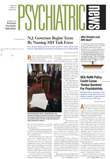Nearly one-fourth of patients in a commercially insured population for whom claims for atypical antipsychotic drugs were submitted were aged 9 or younger, and most of these were boys.
Those were among the findings from a period prevalence study of atypical antipsychotic drug use among commercially insured youths in the United States. The report appears in the April Archives of Pediatric Adolescent Medicine.
“We knew from previous studies that use of these drugs was increasing in children in general, but we hadn't been aware of the spike in use among boys, especially boys aged 9 and younger,” lead author Lesley H. Curtis, Ph.D., told Psychiatric News. “That really surprised us.”
She is an assistant research professor at Duke Clinical Research Institute in Durham, N.C.
Curtis and colleagues examined outpatient prescription claims for atypical antipsychotic drugs for 2001 from the database of a large pharmaceutical benefit manager servicing more than 6 million outpatients.
They found that the prevalence of atypical antipsychotic use was 267.1 per 100,000 subjects aged 19 years and younger. Moreover, the rate for male patients was more than double that for female patients even though male and female patients were equally represented in the overall population.
Prevalence was highest at 594.3 per 100,000 subjects among boys aged 10 to 14. Among girls the prevalence peaked at 291 per 100,000 subjects aged 15 to 19.
Most startling was the finding that nearly one-fourth of patients with a claim for atypical antipsychotic drugs were aged 9 or younger, and that 80 percent of these were boys, according to the report.
Curtis told Psychiatric News that risperidone was the most commonly used drug among both boys and girls, with olanzapine ranking second.
The conditions for which the children are being prescribed these drugs and who is doing the prescribing have yet to be determined.
“Schizophrenia is seldom diagnosed before the teenage years, so our hunch is that these drugs are being prescribed for behavioral disorders, which are known to be more common in boys,” Curtis told Psychiatric News.
“We also don't know from these data who are the physicians prescribing these drugs,” she said.
“Our concern is that these drugs are really not well studied in children, particularly for their effects over the long term.”
Psychiatrist Ranga Krishnan, M.B., a co-author on the study, agreed.“ We really don't know what these drugs do to physical and mental development over the long term,” he said.
He said the study was prompted in part by a local, anecdotal impression that antipsychotic drug use was increasing in the pediatric population.
“Our own assessment internally was showing that use of these drugs was increasing,” Krishnan said. “Especially in the emergency room, we saw a lot of kids coming in who were on these drugs. The question was whether this was a local or a national phenomenon.”
He added that he believes that use of atypical antipsychotics may have actually increased since the study period. Because of controversy surrounding potential suicide risk associated with SSRIs in children, he said, some physicians may be switching to the atypical antipsychotics.
Like Curtis, he believes that in many cases these drugs are likely being prescribed by nonpsychiatrists. “If you asked most psychiatrists, I think they would be surprised by the findings,” he said.
Arch Pediatr Adolesc Med 2005 159 362
